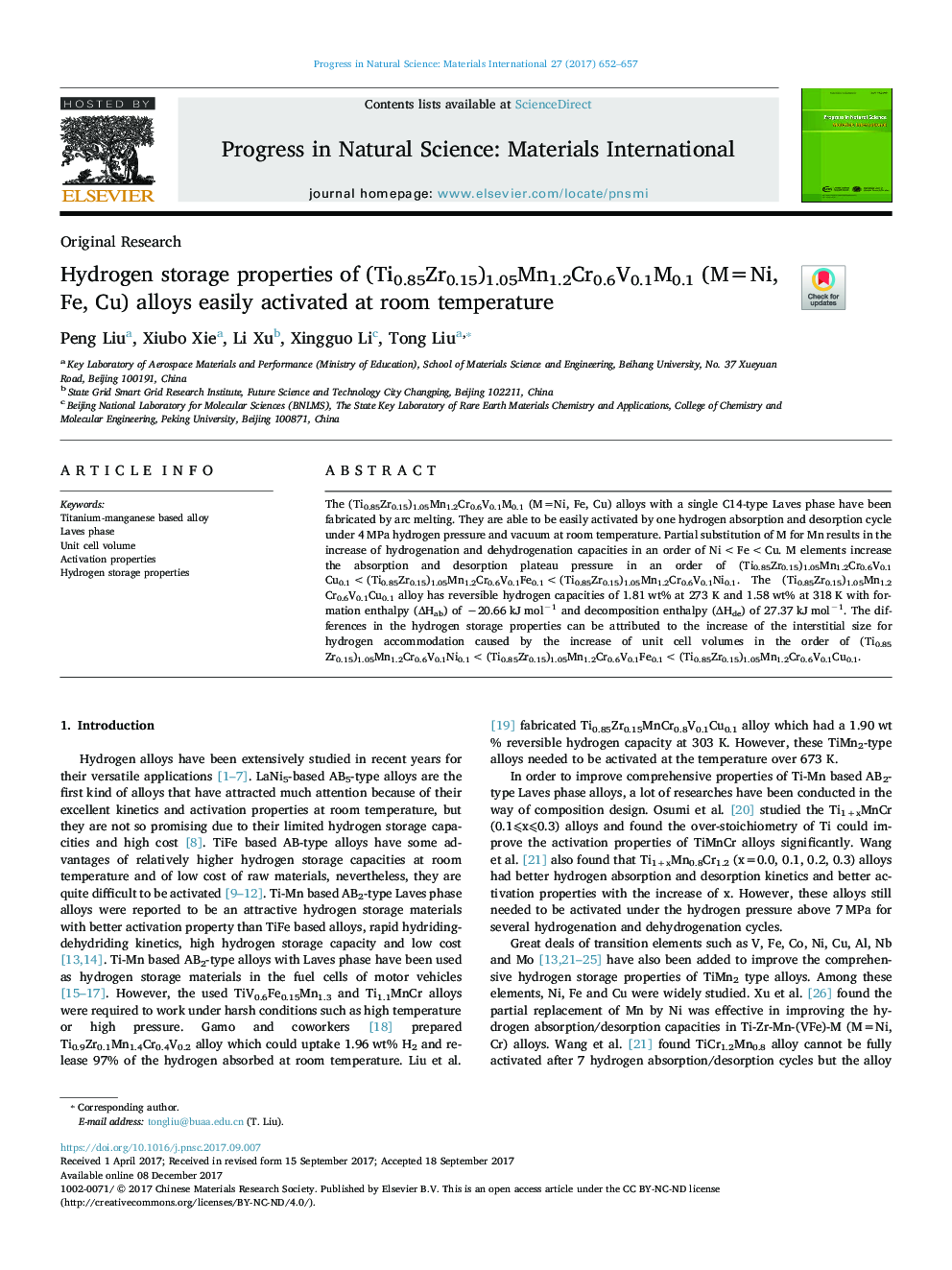| Article ID | Journal | Published Year | Pages | File Type |
|---|---|---|---|---|
| 7934769 | Progress in Natural Science: Materials International | 2017 | 6 Pages |
Abstract
The (Ti0.85Zr0.15)1.05Mn1.2Cr0.6V0.1M0.1 (M=Ni, Fe, Cu) alloys with a single C14-type Laves phase have been fabricated by arc melting. They are able to be easily activated by one hydrogen absorption and desorption cycle under 4Â MPa hydrogen pressure and vacuum at room temperature. Partial substitution of M for Mn results in the increase of hydrogenation and dehydrogenation capacities in an order of Ni < Fe < Cu. M elements increase the absorption and desorption plateau pressure in an order of (Ti0.85Zr0.15)1.05Mn1.2Cr0.6V0.1Cu0.1 < (Ti0.85Zr0.15)1.05Mn1.2Cr0.6V0.1Fe0.1 < (Ti0.85Zr0.15)1.05Mn1.2Cr0.6V0.1Ni0.1. The (Ti0.85Zr0.15)1.05Mn1.2Cr0.6V0.1Cu0.1 alloy has reversible hydrogen capacities of 1.81Â wt% at 273 K and 1.58Â wt% at 318Â K with formation enthalpy (ÎHab) of â20.66Â kJÂ molâ1 and decomposition enthalpy (ÎHde) of 27.37Â kJÂ molâ1. The differences in the hydrogen storage properties can be attributed to the increase of the interstitial size for hydrogen accommodation caused by the increase of unit cell volumes in the order of (Ti0.85Zr0.15)1.05Mn1.2Cr0.6V0.1Ni0.1 < (Ti0.85Zr0.15)1.05Mn1.2Cr0.6V0.1Fe0.1 < (Ti0.85Zr0.15)1.05Mn1.2Cr0.6V0.1Cu0.1.
Related Topics
Physical Sciences and Engineering
Materials Science
Electronic, Optical and Magnetic Materials
Authors
Peng Liu, Xiubo Xie, Li Xu, Xingguo Li, Tong Liu,
